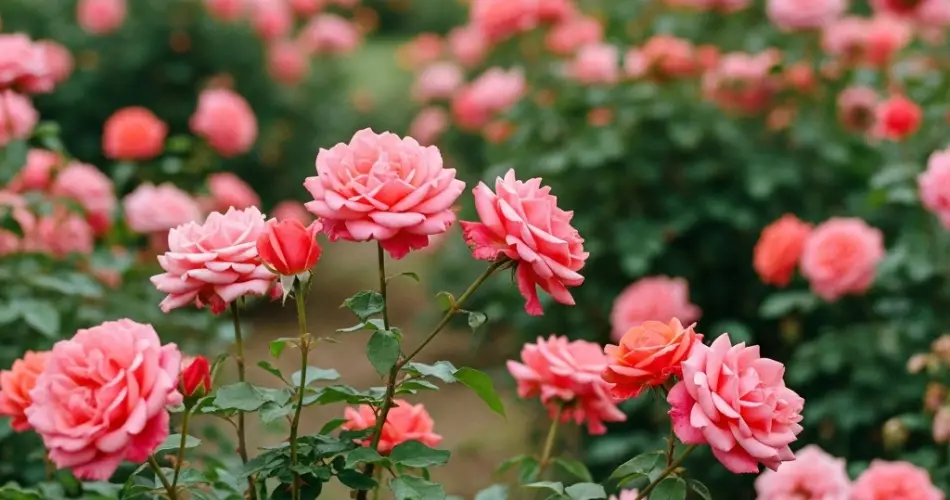Rose bushes are one of the most beloved additions to any garden, admired for their beauty, fragrance, and symbolism. But while they may seem delicate, roses are surprisingly resilient when given the right care. If your roses aren’t blooming as much as you’d like—or if you want to enjoy continuous flowering throughout the year—there’s a simple routine you can follow that doesn’t involve homemade fertilizers or costly commercial products.
Whether you have a small urban garden, a balcony planter, or a larger flower bed, this method works across all rose varieties and garden sizes. It focuses on proper pruning, smart watering, and natural practices that activate your plant’s blooming potential.
Why Roses Stop Flowering
Before diving into what to do, it’s important to understand why rose bushes may stop blooming:
-
Old or improper pruning can prevent new growth where flowers would normally appear.
-
Exhausted soil may lack the nutrients roses need to continue flowering.
-
Excessive shade limits sunlight, which is essential for rose blooms.
-
Overwatering or poor drainage causes root rot or stress, halting flower production.
-
Failure to remove faded blooms (deadheading) sends the wrong signal to the plant—it thinks it’s done blooming for the season.
With that in mind, the goal is to refresh your rose bush’s environment and habits to stimulate repeat blooming.
The Key Steps for Year-Round Blooms
1. Regular and Strategic Pruning
Pruning is crucial for roses. Without it, your bush becomes tangled, woody, and less productive. The best time for major pruning is late winter or early spring—just before new growth begins. Use clean, sharp pruning shears and:
-
Remove dead or diseased wood.
-
Cut away crossing branches to improve airflow.
-
Shape the bush to allow sunlight to reach the center.
-
Trim just above outward-facing buds to encourage outward growth.
Throughout the year, light pruning and deadheading are essential. After a bloom fades, cut the stem back to the first set of five leaves. This tells the plant to send out a new flowering shoot.
2. Improve Sun Exposure
Roses need at least 6 hours of direct sunlight daily to produce continuous blooms. If your rose bush is in partial shade or too crowded by other plants, consider relocating it or trimming nearby plants to let more light in.
Urban gardeners should rotate containers regularly to ensure balanced sun exposure or move potted roses to the sunniest spot available.
3. Mulch to Protect and Enrich the Soil
Apply a 5–8 cm (2–3 inch) layer of mulch around the base of your rose bush using organic materials like shredded bark, dry leaves, or composted manure. Mulch:
-
Maintains consistent moisture
-
Prevents weed growth
-
Slowly enriches the soil as it breaks down
-
Regulates soil temperature
Avoid letting mulch touch the stems directly to prevent rot.
4. Water Deeply, Not Frequently
Roses don’t like soggy roots, but they do need consistent moisture. Deep waterings twice a week are more effective than daily light watering. Always water at the base of the plant in the early morning or late afternoon to reduce evaporation.
In urban gardens, consider using self-watering containers or drip irrigation systems to maintain ideal hydration levels.
5. Rejuvenate the Soil Naturally
Even if you’re not using fertilizers, you can naturally maintain healthy soil by occasionally mixing in:
-
A handful of well-rotted compost
-
Banana peels or coffee grounds buried near the roots (for potassium and nitrogen)
-
A top-up of garden soil mixed with sand to improve drainage
Do this every couple of months to keep the root zone nourished without overwhelming the plant.
6. Control Pests and Diseases Organically
Roses are prone to pests like aphids and diseases like powdery mildew. Keep an eye out for:
-
Discolored or curling leaves
-
Sticky residue (a sign of aphids)
-
White powder on leaves (mildew)
To manage issues without chemicals:
-
Spray with a mixture of water and mild soap
-
Introduce natural predators like ladybugs
-
Ensure good airflow around the plant
Year-Round Blooming Is Possible
By following this routine, rose bushes can produce beautiful, healthy blooms not just in spring, but throughout the growing season. With the right balance of pruning, sunlight, hydration, and basic soil care, even a rose bush in a small urban garden can flower repeatedly—no need for constant feeding or synthetic additives.
This approach works with:
-
Hybrid teas
-
Climbing roses
-
Miniature varieties
-
Shrub roses
-
Potted roses on balconies or terraces
Consistency is key. The more you observe and respond to your roses’ needs, the more they’ll reward you with color, fragrance, and vitality.
Conclusion
Roses are generous plants. When you provide the essentials—sun, air, water, and care—they bloom more often than most people realize. You don’t need to rely on homemade or store-bought fertilizers to keep your rose bushes flowering all year. With just a few smart practices, you can create a garden space full of roses that thrive naturally, offering beauty and joy every season.



